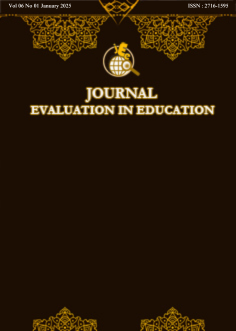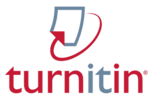Development of Statistical Teaching Materials using Statcal to Enhance Students' Statistical Literacy and Self-Efficacy
Abstract
Purpose of the study: This study addresses the challenges of limited teaching materials and the need for innovative tools to enhance students' statistical literacy and self-efficacy by developing inferential statistics teaching materials integrated with Statcal software. The primary aim is to create and evaluate the effectiveness of these materials in improving students' skills and confidence in statistical learning.
Methodology: The research employed a qualitative approach and involved collaboration with two material expert lecturers, one statistical program expert lecturer, and one student. The development process followed four stages: definition, design, development, and dissemination, ensuring a comprehensive framework for creating effective teaching resources
Main Findings: Validation results showed the materials were valid with a score of 4.21, practical with an 83.72% score, and effective with an 82.4% score, all in the good category. Additionally, the teaching materials significantly improved students' statistical literacy (72.78%) and self-efficacy (73.52%), categorized as good.
Novelty/Originality of this study: The utilizing interactive tools such as Statcal, students can understand statistical concepts more deeply through a practical and contextual approach. This is relevant to be applied to statistics learning in schools and universities, especially in preparing students to face the challenges of the digital data era. In addition, this study also encourages teachers to integrate technology in learning to create a more engaging and effective learning experience.
References
M. Ekhsan, Y. Badrianto, S. Juariah, D. Astuti, and N. Bebasari, "Pembekalan Siswa Dalam Menghadapi Dunia Kerja [Providing Students with the Provision to Face the World of Work],” Abdi Jurnal Publikasi, vol. 1, no. 2, pp. 279–284, 2022.
F. Reza, and F. L. Tinggogoy, “Konflik generasi z di bidang pendidikan di era revolusi industri 4.0 tantangan dan solusinya [Generation Z conflict in education in the era of the industrial revolution 4.0 challenges and solutions],” PARADIGMA : Jurnal Administrasi Publik, vol. 1, no. 2, pp. 142–155, 2022, doi: doi.org/10.55100/paradigma.v1i2.51.
I. Suwahyu, “Eksistensi pendidikan islam di era revolusi industri 4.0 [The existence of Islamic education in the era of the industrial revolution 4.0],” Jurnal Pendidikan Dan Konseling, vol. 4, no. 4, pp. 3902–3910, 2022, doi: 10.31004/jpdk.v4i4.6092.
M. R. Firdaus, R. R. Irawan, C. H. Y. Mahardika, P. Lumban Gaol, and B. A. Prinaryanto, “Tantangam teknologi artificial intelligence pada kegiatan pemebelajaran mahasiswa [Challenges of artificial intelligence technology in student learning activities]”. Sindoro CENDIKIA PENDIDIKAN, vol. 1, no. 9, pp. 101–112, 2023, doi: 10.9644/sindoro.v1i9.1174.
A. Maritsa, U. Hanifah Salsabila, M. Wafiq, P. Rahma Anindya, abd M. Azhar Ma’shum, “Pengaruh teknologi dalam dunia pendidikan [The influence of technology in the world of education],” Al-Mutharahah: Jurnal Penelitian Dan Kajian Sosial Keagamaan, vol. 18, no. 2, pp. 91–100, 2021, doi: 10.46781/al-mutharahah.v18i2.303.
D. E. Kurniawan, M. Iqbal, J. Friadi, R. I. Borman, and R. Rinaldi, "Smart monitoring temperature and humidity of the room server using raspberry pi and whatsapp notifications,” Journal of Physics: Conference Series, vol. 1351, no. 1. 2019, doi: 10.1088/1742-6596/1351/1/012006.
S. K. Walker, Technology Use and Families: Implications for Work-Family Balance and Parenting Education. 2021
I. Ajizah, and M. N. Huda, “TPACK sebagai bekal guru pai di era revolusi industri 4.0 [TPACK as a provision for PA teachers in the era of the industrial revolution 4.0],” Ta’allum: Jurnal Pendidikan Islam, vol. 8, no. 2, pp. 333–352, 2020, doi: 10.21274/taalum.2020.8.2.333-352.
N. C. Burbules, G. Fan, and P. Repp, “Five trends of education and technology in a sustainable future,” Geography and Sustainability, vol. 1, no. 2, pp. 93–97, 2020, doi: 10.1016/j.geosus.2020.05.001.
I. M. Pustikayasa, I. Permana, F. Kadir, R. S. Y. Zebua, P. Karuru, L. Husnita, N. P. S. Pinatih, W. Indrawati, D. S. Nindiati, and E. Yulaini, Transformasi Pendidikan: Panduan Praktis Teknologi Di Ruang Belajar. PT. Sonpedia Publishing Indonesia, 2023.
Y. Yufita, and H. Sihotang, “Kepemimpinan transformasional dan pemberdayaan guru dalam tranformasi pendidikan 4.0 [Transformational leadership and teacher empowerment in education transformation 4.0],” Jurnal Dinamika Pendidikan, vol. 13, no. 2, pp. 204–215, 2020.
B. Mardhotillah, R. Asyhar, and E. Elisa, E. “Philosophy of apllied statistical science in the eraof smart society 5.0. Multi Proximity: Jurnal Statistika Universitas Jambi, vol. 1, no. 2, pp. 57–70, 2022, doi: 10.22437/multiproximity.vli2.22441.
H. Saputra, “Penguatan kemampuan peserta didik dalam menghadapi era society 5.0 melalui pembelajaran matematika,” BERSATU: Jurnal Pendidikan Bhineka Tunggal Ika, vol. 2, no. 2, pp. 287–302, 2024, doi: 10.51903/bersatu.v2i2.640.
G. Casella, and R. Berger, “Statistical Inference,” CRC Press.
M. A. Tiro, “National movement for statistical literacy in Indonesia: An idea. Journal of Physics: Conference Series, vol. 1028, no. 1, 2018, doi: 10.1088/1742-6596/1028/1/012216.
J. Takaria, “Peningkatan literasi statistis, representasi matematis, dan self concept mahasiswa calon guru sekolah dasar melalui model collaborative problem solving,” Disertasi Pascasarjana UPI, 2015.
T. Latifah, and E . A. Afriansyah, “Kesulitan dalam kemampuan pemecahan masalah matematis siswa pada materi statistika [Difficulties in students' mathematical problem solving abilities in statistics material],” Journal of Authentic Research on Mathematics Education (JARME), vol. 3, no. 2, 2021, doi: 10.37058/jarme.v3i2.3207.
J. W. Best, and J. V. Kahn, “Research in Education. Pearson India,”
F. L. Coolidge, “Statistics: A Gentle Introduction.” SAGE Publications, 2000.
R. Andriatna, I. Kurniawati, and A. N. Wulandari, “Profil kemampuan literasi statistik mahasiswa calon guru matematika [Profile of statistical literacy skills of prospective mathematics teacher students],” FIBONACCI: Jurnal Pendidikan Matematika Dan Matematika, vol. 7, no. 1, pp. 19, 2021, doi: 10.24853/fbc.7.1.19-28.
A. K. Hudson, K. A. Moore, B. Han, P. Wee Koh, E. Binks-Cantrell, and R. Malatesha Joshi, “Elementary teachers’ knowledge of foundational literacy skills: A critical piece of the puzzle in the science of reading,” Reading Research Quarterly, vol. 56, pp. S287-S315, 2021.
L. S. J. Farmer, and I. Stricevic, “Using research to promote literacy and reading in libraries: guidelines for librarians,” IFLA Headquarters.
I. Domu, K. F. Pinontoan, and N. O. Mangelep, “Problem-Based learning in the online flipped classroom: Its impact on statistical literacy skills,” Journal of Education and e-Learning Research, vol. 10, no. 2, pp. 336-343, 2023.
K. Aoyama, M. Stephens, “Organisation for Economic Cooperation and Development (OECD). In Programme for International Student Assessment”, OECD.
A. M. Aziz, and R. Rosli, “A systematic literature review on developing students’ statistical literacy skills,” Journal of Physics: Conference Series, vol. 1806, no. 1, 2021, doi: 10.1088/1742-6596/1806/1/012102.
R. Gould, “Data literacy is statistical literacy,” Statistics Education Research Journal, vol. 1, no. 16, pp. 22–25, 2017.
M. Schield, “Information Literacy, Statistical Literacy and Data Literacy.”, 2004
S. Tishkovskaya, and G. A. Lancaster, “Statistical education in the 21st century: A review of challenges, teaching innovations and strategies for reform,” Journal of Statistics Education, vol. 20, no. 2, 2012, doi: 10.1080/10691898.2012.11889641.
D. P. Utomo, “An analysis of the statistical literacy of middle school students in solving timss problems,” International Journal of Education in Mathematics, Science and Technology, vol. 9, no. 2, pp. 181–197, 2021, doi: 10.46328/IJEMST.1552.
L. Zapata-Cardona, and C. A. Martínez-Castro, “Statistical modeling in teacher education,” Mathematical Thinking and Learning, vol. 25, no. 1, pp. 64-78, 2023.
J. A. Lorah, and M. Valdivia, “Diversity in statistics education at postsecondary institutions,” International Journal of Research in Undergraduate Mathematics Education, vol. 7, no. 1, pp. 21-32, 2021.
N. A. M. N. Azmay, R. Rosli, S. M. Maat, and M. S. Mahmud, “Educational research trends on statistical reasoning and statistical thinking: A systematic literature review,” Journal of Academic Research in Progressive Education and Development, vol. 12, no. 2, pp. 586-600, 2023.
R. Febriyansi, and K. Cahaya Setiawan, “Hubungan antara Self Efficacy dengan Career Development pada Mahasiswa yang Mengikuti Organisasi SEMA UIN Raden Fatah Palembang Periode 2018 [The Relationship between Self Efficacy and Career Development in Students Who Participate in the SEMA UIN Raden Fatah Palembang Organization for the 2018 Period],” Jurnal Intelektualita: Keislaman, Sosial, Dan Sains, vol. 9, no. 1, 2020.
P. I. Amalia, and M. Indri, “Pengaruh pendidikan kewirausahaan, efikasi diri dan minat kerja terhadap kesiapan kerja [The influence of entrepreneurship education, self-efficacy and work interest on work readiness],” Economic Education Analysis Journal, vol. 9, no. 3, pp. 907–922, 2020, doi: 10.15294/eeaj.v9i3.42415.
A. Alraja, “Undergraduate nursing students’ knowledge and self-efficacy about workplace bullying: A Quasi-experimental Study,” 2021.
F. C. Lunenburg, “Self-Efficacy in the workplace: Implications for motivation and performance,” International Journal Of Management, vol. 14, 2011.
C. J. Vanhaltren, “Sself efficacy: Motivator for learning,” International Journal in Management and Social Scince, vol. 4, no. 8, pp. 145–150, 2016.
S. Dwiyatno, E. Krisnaningsih, S. Sulistiyono, R. Wiji Wahyuningrum, and A. Dyah Juniarti, “Peningkatan kompetensi guru pesantren melalui pendampingan pembuatan buku ajar kreatif dan inovatif [Improving the competence of Islamic boarding school teachers through assistance in creating creative and innovative textbooks].” Dinamisia : Jurnal Pengabdian Kepada Masyarakat, vol. 6, no. 6, 2022, doi: 10.31849/dinamisia.v6i6.11633.
P. U. Gio, and E. Rosmaini, “Belajar olah data dengan spss, minitab, r, microsoft excel, eviews, lisrel, amos, dan smartpls (disertai beberapa contoh perhitungan manual), 2016.
S. Sugiyono, “Metode penelitian bisnis : Pendekatan kuantitatif, kualitatif, kombinasi dan R&D [Business research methods: Quantitative, qualitative, combination and R&D approaches],” Alfabeta, 2018.
R. A. Johnson, and G. K. Bhattacharyya, “Statistics: Principles and methods,” Wiley, 2019.
R. Sariningsih, and I. Herdiman, “Mengembangkan kemampuan penalaran statistik dan berpikir kreatif matematis mahasiswa di Kota Cimahi melalui pendekatan open-ended [Developing statistical reasoning and mathematical creative thinking skills of students in Cimahi City through an open-ended approach],” Jurnal Riset Pendidikan Matematika, vol. 4, no. 2, pp. 239, 2017, doi: 10.21831/jrpm.v4i2.16685.
L. E. Padilla, L. O. Tellez, L. A. Escamilla, and J. A. Vazquez, “Cosmological parameter inference with bayesian statistics,” Universe, vol. 7, no. 7, p. 213, 2021, doi: 10.3390/universe7070213.
A. Bandura, “Self-efficacy: The Exercise of Control,” W.H. Freeman, 1972.
A. Bandura, “Perceived Self-Efficacy in Cognitive Development and Functioning,” Educational Psychologist, vol. 28, no. 2, pp. 117–148, 1993.
A. Bandura, and D. Cervone, “Social Cognitive Theory: An Agentic Perspective on Human Nature,” Wiley, 2023.
D. H. Schunk, “Self-Efficacy and academic motivation,” Educational Psychologist, vol. 26, no. 3, pp. 207–231, 1991.
P. A. Van Lange, A. W. Kruglanski, and E. T. Higgins, “Handbook of Theories of Social Psychology (Vol. 1),” SAGE Publications, 2012.
B. J. Zimmerman, and A. Kitsantas, “Developmental phases in self-regulation: Shifting from process goals to outcome goals,” Journal of Educational Psychology, vol. 89, no. 1, pp. 29–36, 1997, doi: 10.1037/0022-0663.89.1.29.
S. Widodo, “Pengaruh kompetensi, fasilitas belajar dan efikasi diri terhadap motivasi belajar online siswa sekolah dasar madrasah ibtidaiyah An-Nur Jakarta Timur [The influence of competence, learning facilities and self-efficacy on online learning motivation of elementary school students at Madrasah Ibtidaiyah An-Nur, East Jakarta],” Jurnal Ilmiah Manajemen Surya Pasca Scientia, vol. 11, no. 2, pp. 89–99, 2022.
Copyright (c) 2025 Elfitra Elfitra, Tiur Malasari Siregar, Suci Frisnoiry

This work is licensed under a Creative Commons Attribution 4.0 International License.
Authors who publish with this journal agree to the following terms:
- Authors retain copyright and acknowledge that the Integrated Science Education Journal is the first publisher licensed under a Creative Commons Attribution 4.0 International License.
- Authors are able to enter into separate, additional contractual arrangements for the non-exclusive distribution of the journal's published version of the work (e.g., post it to an institutional repository or publish it in a book), with an acknowledgment of its initial publication in this journal.
- Authors are permitted and encouraged to post their work online (e.g., in institutional repositories or on their website) prior to and during the submission process, as it can lead to productive exchanges and earlier and greater citation of published work.









.png)
.png)





